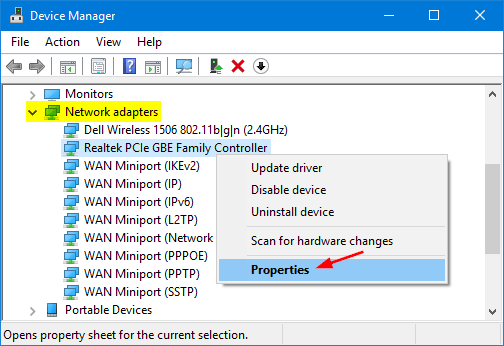The system logs gave no info of this guy doing anything. So I'm kinda fed up since rhis hasn't been the first time said guy has given me trouble, and I think it's about time I put an end to this. (Whitelisting my devices wouldn't work because of the same problem as blacklisting.) So I know the guy's MAC address and IP address given by the router. MAC Address is simply known as media access control address. MAC address of a device is a unique identifier that is assigned to network interfaces for communications at the data link layer of a network segment. These MAC addresses are used as a network address for most IEEE 802 network technologies, for example, Ethernet and Wi-Fi.
Are you looking for easy ways on how to hack a WiFi network? Perhaps you were downloading your favorite movie or music, but your internet subscription expires before the download is complete. Leaning how to hack Wi-Fi passwords can save you from disappointments of a failed download.
Knowing how to hack a WiFi network can also help you to retrieve your forgotten or changed Wi-Fi password.
If you want to stop them using your wifi you should increase your security, not hack them. In your router's wifi section there is a built-in mac filtering system that you can enable. You need to add your devices' mac address to the list and pick a mode. There are two main filtering modes there. On February 14, 2006, an initial 'hack' of Mac OS X v10.4.4 was released on the Internet by a programmer with the pseudonym crg92. Within hours Apple released the 10.4.5 update, 13 which was then hacked by the same author within two weeks. Airodump will begin scanning. You can leave the device for a while as it scans for information. Be sure to plug it in if you are running low on battery. Replace channel# with the channel number the access point is broadcasting on (e.g. Replace MAC address with the MAC address of the router (e.g 00:0a:95:9d:68:16).
You can also use the skill to access someone else’s wireless network without asking for their permission.
There’re many Wi-Fi networks around us. Whether its an office, school, neighbor, or your college Wi-Fi network, you can hack the passwords without much hustle.
What You Need to Hack a WiFi Network
To hack a Wi-Fi password, you need a hacking software such as Kali Linux operating system.
You can also use Aircrack-ng program which is an easy-to-use tool.
Additionally, there’re other tools such as Hoverwatch phone tracker and keylogger that you can use to hack passwords of wireless networks.
This tool records every key typed on phones keypads or PC keyboards.
Thus, when you install the software on someone’s else device, the tool will save passwords on private Wi-Fi networks the target phone connects to.
You can also use a Wi-Fi adapter that has the ultimate range to hack a Wi-Fi network
There’re other tools such as Fluxion program which are useful on Linux PC.
Hacking programs are in various types. Whether you’re using an Android, Mac, or Windows device, you can choose the tool compatible with the operating system of your phone.
Types of Wi-Fi Protections
- WEP doesn’t guarantee maximum safety because its algorithm has been cracked.
- While WAP network has capabilities of generating temporary keys. This makes these networks vulnerable to hacking.
- WAP2 is one of the most secure networks. It utilizes AES (Advanced Encryption Standards).
However, every Wi-Fi network can be hacked with the right tools.

Below are the methods on how to hack a Wi-Fi network.
Breaking Wi-Fi with WEP Security
Many people have been able to hack this network type because the process is simple.
Aircrack hacker tool is available for Windows and Linux. You can use it to hack any type of password.
Breaking Wi-Fi with WPA or WPA2 Security
Wordlist Attack

Fluxion Attack
Breaking Wi-Fi with Mac Address Filtering

For Android users, you need to know the Mac address of the device.
Find Device Mac Address
Breaking WIFI with Hidden Network
Breaking Wi-Fi with Open Network
How to Hack a WiFi Network Using an Android or iPhone Device
- Rout your device.
- Check your device’s Broadcom support. Your device needs to support Broadcom chipsets.
- Download Bcmon app. This tool will enable monitoring of Broadcom chipsets on your device.
- Once you install the program, run it and click on “Monitor Mode.”
- Download Reaver app. This software will help in cracking WPS pin of the Wi-Fi network.
- Launch the Reaver application. Click on “Confirm” for confirmation that you aren’t using the tool for illegal purposes.
- Verify your settings and check the “Aromatic Advanced Setting” box.
- Click on “Start Attack” to hack a Wi-Fi network.
Conclusion
Hack Phone With Mac Address
MAC spoofing is a technique for changing a factory-assigned Media Access Control (MAC) address of a network interface on a networked device. The MAC address that is hard-coded on a network interface controller (NIC) cannot be changed. However, many drivers allow the MAC address to be changed. Additionally, there are tools which can make an operating system believe that the NIC has the MAC address of a user's choosing. The process of masking a MAC address is known as MAC spoofing. Essentially, MAC spoofing entails changing a computer's identity, for any reason, and it is relatively easy.[1]
Motivation[edit]
Changing the assigned MAC address may allow the user to bypass access control lists on servers or routers, either hiding a computer on a network or allowing it to impersonate another network device. MAC spoofing is done for legitimate and illicit purposes alike.
New hardware for existing Internet Service Providers (ISP)[edit]
Many ISPs register the client's MAC address for service and billing services.[2] Since MAC addresses are unique and hard-coded on network interface controller (NIC) cards,[1] when the client wants to connect a new device or change an existing one, the ISP will detect different MAC addresses and might not grant Internet access to those new devices. This can be circumvented easily by MAC spoofing, with the client only needing to spoof the new device's MAC address so it appears to be the MAC address that was registered by the ISP.[2] In this case, the client spoofs their MAC address to gain Internet access from multiple devices. While this is generally a legitimate case, MAC spoofing of new devices can be considered illegal if the ISP's user agreement prevents the user from connecting more than one device to their service. Moreover, the client is not the only person who can spoof their MAC address to gain access to the ISP. Computer crackers can gain unauthorized access to the ISP via the same technique. This allows them to gain access to unauthorized services, while being difficult to identify and track as they are using the client's identity. This action is considered an illegitimate and illegal use of MAC spoofing.[3]
This also applies to customer-premises equipment, such as cable and DSL modems. If leased to the customer on a monthly basis, the equipment has a hard-coded MAC address known to the provider's distribution networks, allowing service to be established as long as the customer is not in billing arrears. In cases where the provider allows customers to provide their own equipment (and thus avoid the monthly leasing fee on their bill), the provider sometimes requires that the customer provide the MAC address of their equipment before service is established.
Fulfilling software requirements[edit]
Some software can only be installed and run on systems with pre-defined MAC addresses as stated in the software end-user license agreement, and users have to comply with this requirement in order to gain access to the software. If the user has to install different hardware due to malfunction of the original device or if there is a problem with the user's NIC card, then the software will not recognize the new hardware. However, this problem can be solved using MAC spoofing. The user has to spoof the new MAC address so that it appears to be the address that was in use when the software was registered.[citation needed] Legal issues might arise if the software is run on multiple devices at once by using MAC spoofing. At the same time, the user can access software for which they have not secured a license. Contacting the software vendor might be the safest route to take if there is a hardware problem preventing access to the software.
Some softwares may also perform MAC filtering in an attempt to ensure unauthorized users cannot gain access to certain networks which would otherwise be freely accessible with the software. Such cases can be considered illegitimate or illegal activity and legal action may be taken.[4]
Identity masking[edit]
If a user chooses to spoof their MAC address in order to protect their privacy,[citation needed] this is called identity masking. As an example motivation, on Wi-Fi network connections a MAC address is not encrypted. Even the secure IEEE 802.11i-2004 (WPA) encryption method does not prevent Wi-Fi networks from sending out MAC addresses.[citation needed] Hence, in order to avoid being tracked, the user might choose to spoof the device's MAC address. However, computer crackers use the same technique to bypass access control methods such as MAC filtering, without revealing their identity. MAC filtering prevents access to a network if the MAC address of the device attempting to connect does not match any addresses marked as allowed, which is used by some networks. Computer crackers can use MAC spoofing to gain access to networks utilising MAC filtering if any of the allowed MAC addresses are known to them, possibly with the intent of causing damage, while appearing to be one of the legitimate users of the network. As a result, the real offender may go undetected by law enforcement.[citation needed]
MAC Address Randomization in WiFi[edit]
To prevent third parties from using MAC addresses to track devices, Android, Linux, iOS, and Windows[5] have implemented MAC address randomization. In June 2014, Apple announced that future versions of iOS would randomize MAC addresses for all WiFi connections. The Linux kernel has supported MAC address randomization during network scans since March 2015,[6] but drivers need to be updated to use this feature.[7] Windows has supported it since the release of Windows 10[5] in July 2015.
Controversy[edit]
Although MAC address spoofing is not illegal, its practice has caused controversy in some cases. In the 2012 indictment against Aaron Swartz, an Internet hacktivist who was accused of illegally accessing files from the JSTOR digital library, prosecutors claimed that because he had spoofed his MAC address, this showed purposeful intent to commit criminal acts.[4] In June 2014, Apple announced that future versions of their iOS platform would randomize MAC addresses for all WiFi connections, making it more difficult for internet service providers to track user activities and identities, which resurrected moral and legal arguments surrounding the practice of MAC spoofing among several blogs and newspapers.[8]
Limitations[edit]
MAC address spoofing is limited to the local broadcast domain. Unlike IP address spoofing, where senders spoof their IP address in order to cause the receiver to send the response elsewhere, in MAC address spoofing the response is usually received by the spoofing party if the switch[clarification needed] is not configured to prevent MAC spoofing.
See also[edit]
- ifconfig, linux utility capable of changing MAC address
References[edit]
- ^ abCardenas, Edgar D. 'MAC Spoofing--An Introduction'. GIAC Security Essentials Certification. SANS Institute. Retrieved 8 February 2013.CS1 maint: discouraged parameter (link)
- ^ ab'MAC Spoofing'. Royal Canadian Mounted Police. Research and Development Section in Collaboration with the NCECC’s Technology Unit. Archived from the original on 23 June 2012. Retrieved 8 February 2013.CS1 maint: discouraged parameter (link)
- ^Gupta, Deepak; Gaurav Tiwari (4 November 2009). 'MAC SPOOFING AND ITS COUNTERMEASURES'(PDF). International Journal of Recent Trends in Engineering. 2 (4): 21. Retrieved 8 February 2013.CS1 maint: discouraged parameter (link)
- ^ abIndictment against Aaron Swartz
- ^ abhttp://papers.mathyvanhoef.com/asiaccs2016.pdf
- ^https://w1.fi/cgit/hostap/plain/wpa_supplicant/ChangeLog
- ^https://git.kernel.org/pub/scm/linux/kernel/git/torvalds/linux.git/commit/?id=ad2b26abc157460ca6fac1a53a2bfeade283adfa
- ^Change MAC Address: Use Public WiFi Signals Without Any Limits, Not To Mention Serious Privacy Benefits